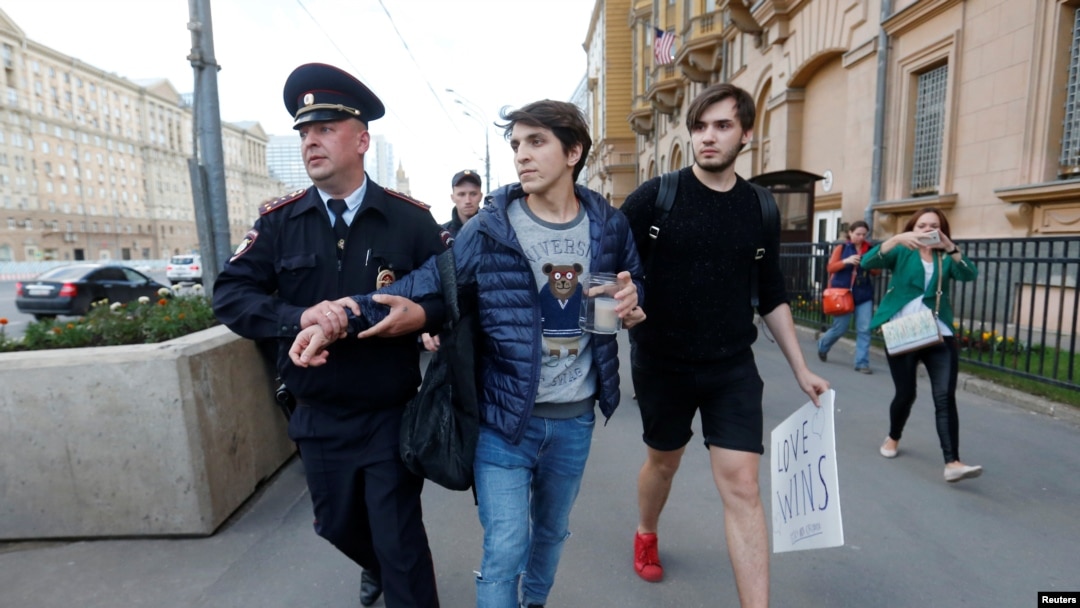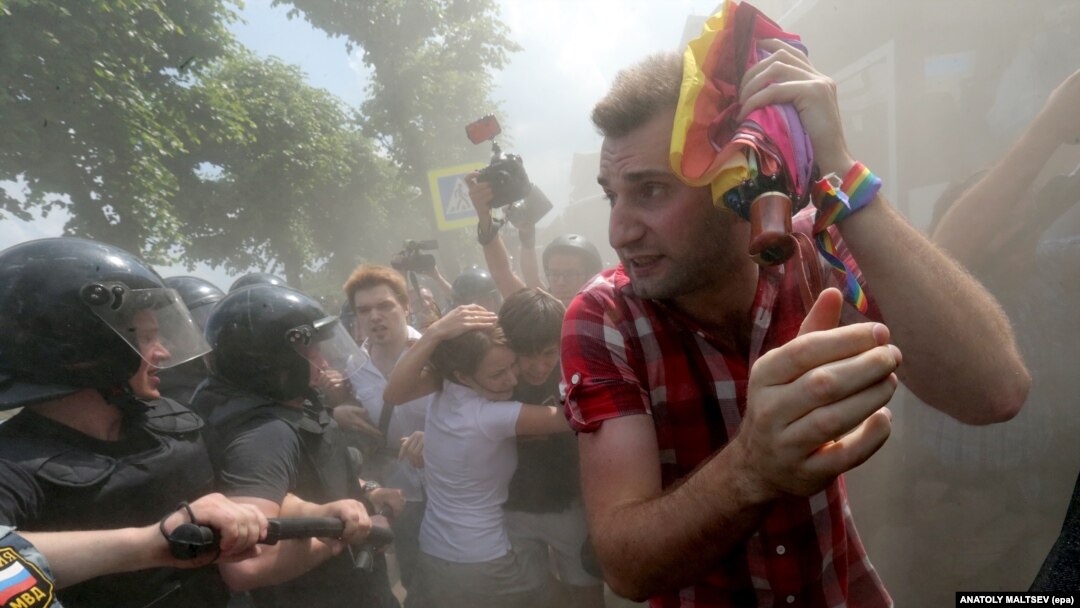WASHINGTON -- The number of new U.S. asylum applications by Russian citizens has jumped for the fourth straight year in 2016, reaching the highest level in more than two decades and more than doubling since President Vladimir Putin's return to the Kremlin for a third term.
Russian citizens filed 1,912 new U.S. asylum application in the fiscal year ending September 30, up 31 percent compared to 2015 and 164 percent since 2012, when Putin was again elected president following a four-year stint as prime minister, new official statistics show.
RFE/RL obtained the U.S. Department of Homeland Security data after filing a request under the Freedom Of Information Act.
While the data does not indicate the basis for applicants' persecution claims, immigration attorneys link this multiyear surge to policies in Russia seen as discriminatory toward sexual minorities, a squeezing of dissent during Putin's third term, and widespread corruption.
Anecdotal evidence and internal accounting from lawyers working with sexual minorities suggest a sharp rise in the number of lesbian, gay, bisexual, and transgender (LGBT) individuals from Russia seeking U.S. asylum since Putin signed a 2013 law banning "propaganda of nontraditional sexual relations" to minors.
The so-called "gay propaganda" law was widely denounced by Western governments and international rights groups as state-sponsored homophobia -- a charge the Kremlin rejects. Rights activists have also warned of increasing numbers of hate crimes committed against LGBT individuals in recent years.

A Russian police officer detains a man as he attempted to place a candle for the victims of the shooting at a gay nightclub in Orlando in front of the U.S. Embassy in Moscow in June.
Immigration Equality, the largest legal-advocacy group in the United States devoted to assisting LGBT individuals with immigration matters, says it received 245 inquiries from Russians interested in asylum by November this year, up from 199 inquiries in all of 2015.
"Clients report increased violence. We have a lot of clients that are coming to us because they've been targeted and have suffered some sort of physical attack in Russia," Pamela Denzer, the client programs director at the New York City-based organization, tells RFE/RL.
Russian prospective asylum seekers are also "concerned about the safety of their partners and children" and about "the Russian government targeting their families," Denzer says.
She adds that Immigration Equality has seen an uptick in inquiries by prospective asylum seekers from other former Soviet republics, including Ukraine, Uzbekistan, and Georgia.
Fleeing Corruption
New York-based immigration attorney Alena Shautsova says she has handled roughly the same number of asylum seekers from Russia this year as in 2015 but that she is not surprised to hear that the overall number of applications spiked year-on-year.
She tells RFE/RL that her Russian asylum seekers this year have included LGBT individuals and entrepreneurs alleging they were targeted by corrupt officials. In one case, the client's mother worked at a state-owned aerospace company and was harassed over the person's studies in the United States, Shautsova says.
"The client's mother was questioned about the client's activities here," she says. "They basically told her to quit, or the child has to come back."
Shautsova says that this year she also took on two cases involving former businessmen who fled Russia because, they claimed, corrupt officials launched criminal cases against them in order to take over their companies. She adds that she had more than 10 other inquiries this year involving similar cases.
Russians Leaving Russia
The number of new U.S. asylum applications by Russians in 2016 was the largest in a single fiscal year since 1994, when the U.S. government received 2,127 applications from Russian citizens three years after the collapse of the Soviet Union.
The EU remains a more popular destination for asylum seekers from Russia. First-time Russian applicants in the 28-country bloc in 2015 rose 30 percent year-on-year to more than 18,000, according to official EU statistics. That number was on pace to increase this year, with 11,465 applicants through the second quarter, according to the most recent available data.
Germany and Poland, easily reachable by train, are traditionally the preferred asylum destinations for Russians in the EU, with many applicants coming from Russia's restive North Caucasus region.
In the first 10 months of 2016, Germany received 10,172 first-time asylum applications from Russian nationals, according to German government data.
These upward asylum trends in the United States and the EU come amid what sociologists warn is a troubling outflow of human capital from Russia -- including highly educated, working-age citizens -- not reflected in official data.
Aleksandr Grebenyuk, co-author of a recent study on Russians' emigration trends, says that 500,000 to 600,000 Russians have moved abroad to reside permanently over the past five years. "That is several times greater than the figures that official [Russian government] statistics show us," he tells RFE/RL.
The study was published in October by a civil-society group founded by Putin's former finance minister and longtime associate, Aleksei Kudrin.
Grebenyuk adds that a majority of these emigres are motivated primarily by economic and employment considerations, as well a desire for a higher standard of living. "Political motives are of secondary importance," he says.


